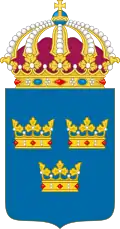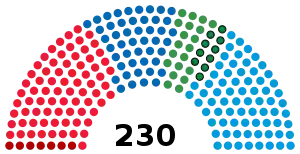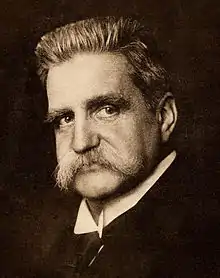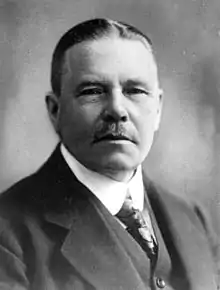1920 Swedish general election
General elections were held in Sweden between 4 and 17 September 1920,[1] the last before universal suffrage was introduced the following year.[2] The Social Democratic Party remained the largest party, winning 75 of the 230 seats in the Second Chamber of the Riksdag.[3] Later in October 1920 Hjalmar Branting was succeeded as Prime Minister by Baron Louis De Geer.
| |||||||||||||||||||||||||||||||||||||||||||||||||||||||||||||||||||||
All 230 seats in the Riksdag | |||||||||||||||||||||||||||||||||||||||||||||||||||||||||||||||||||||
|---|---|---|---|---|---|---|---|---|---|---|---|---|---|---|---|---|---|---|---|---|---|---|---|---|---|---|---|---|---|---|---|---|---|---|---|---|---|---|---|---|---|---|---|---|---|---|---|---|---|---|---|---|---|---|---|---|---|---|---|---|---|---|---|---|---|---|---|---|---|
| |||||||||||||||||||||||||||||||||||||||||||||||||||||||||||||||||||||
| |||||||||||||||||||||||||||||||||||||||||||||||||||||||||||||||||||||
 |
|---|
| This article is part of a series on the politics and government of Sweden |
Results
 | ||||||
| Party | Votes | % | Seats | +/– | ||
|---|---|---|---|---|---|---|
| Social Democratic Party | 195,121 | 29.6 | 75 | –11 | ||
| General Electoral League | 183,019 | 27.8 | 71 | +14 | ||
| Free-minded National Association | 143,355 | 21.8 | 47 | –15 | ||
| Farmers' League | 52,318 | 7.9 | 20 | +9 | ||
| Social Democratic Left Party | 42,056 | 6.4 | 7 | –4 | ||
| National Farmers' Association | 40,623 | 6.2 | 10 | +5 | ||
| Other parties | 1,691 | 0.3 | 0 | 0 | ||
| Invalid/blank votes | 2,011 | – | – | – | ||
| Total | 660,194 | 100 | 230 | 0 | ||
| Registered voters/turnout | 1,192,922 | 55.3 | – | – | ||
| Source: Nohlen & Stöver | ||||||
References
This article is issued from Wikipedia. The text is licensed under Creative Commons - Attribution - Sharealike. Additional terms may apply for the media files.



